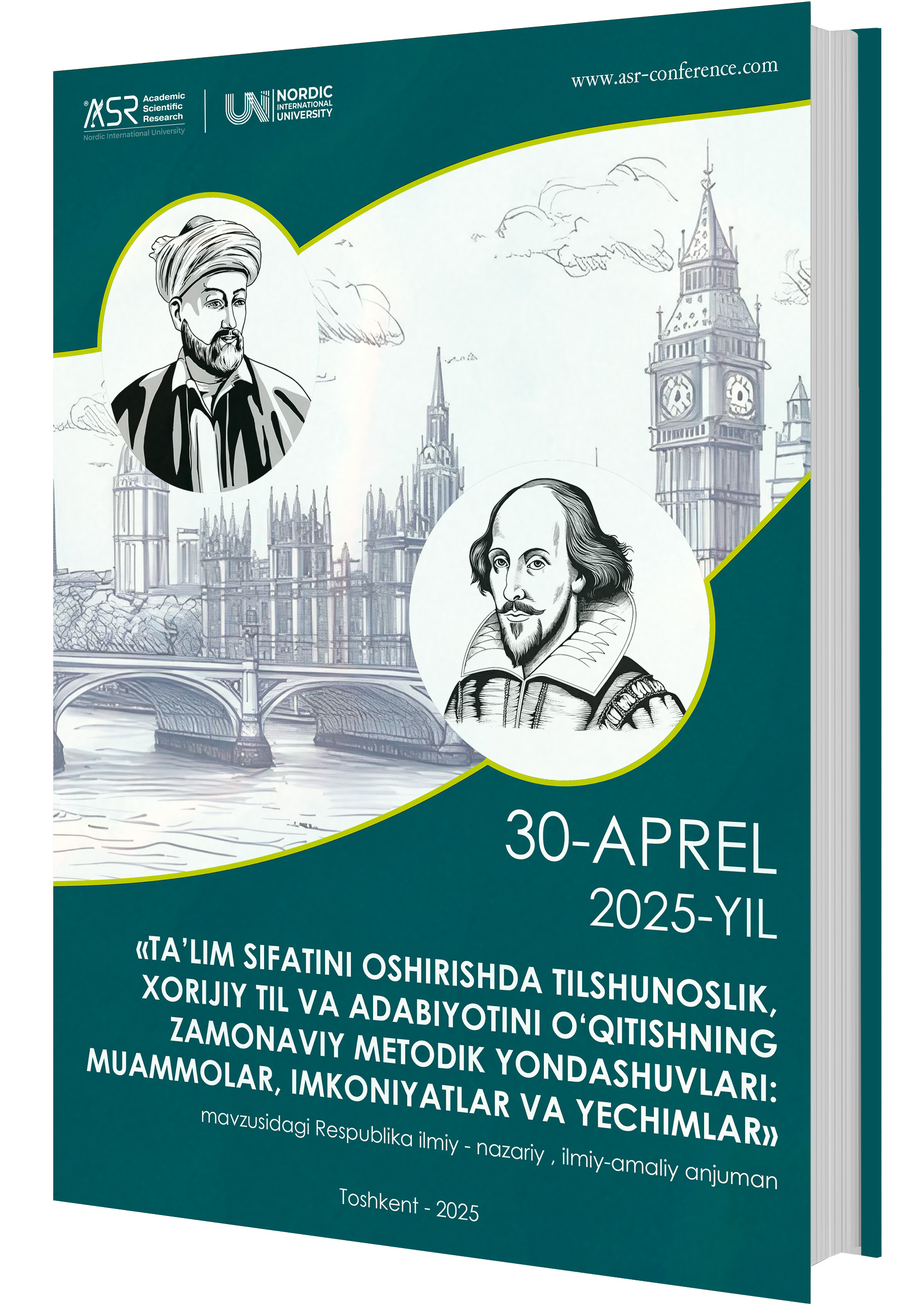ENHANCING INCLUSIVE EDUCATION IN HIGHER EDUCATION THROUGH INNOVATIVE FOREIGN LANGUAGE TEACHING
Аннотация
This article explores the role of innovative foreign language teaching methods in enhancing inclusive education in higher education institutions. It highlights the importance of accessibility in language learning and discusses modern approaches such as technology-assisted learning, Universal Design for Learning (UDL), gamification, collaborative learning, and culturally responsive teaching. The article also addresses challenges in implementation and provides potential solutions to create an inclusive and effective learning environment. By integrating these strategies, higher education institutions can ensure equitable opportunities for all students, regardless of their abilities or backgrounds.
Библиографические ссылки
Ainscow, M. (2016). Struggles for Equity in Education: The Selected Works of Mel Ainscow. Routledge.
Bialystok, E. (2017). Bilingualism and Cognition: A Focus on Mechanisms. Current Directions in Psychological Science, 26(6), 508–512.
CAST. (2018). Universal Design for Learning Guidelines, Version 2.2. CAST.
Chapelle, C. A., & Sauro, S. (2017). The Handbook of Technology and Second Language Teaching and Learning. Wiley-Blackwell.
Dooly, M., & O’Dowd, R. (2012). Researching Online Foreign Language Interaction and Exchange: Theories, Methods, and Challenges. Peter Lang.
Duff, P. A. (2019). Social Dimensions of Second Language Learning and Teaching. Cambridge University Press.
Ellis, R. (2015). Understanding Second Language Acquisition (2nd ed.). Oxford University Press.
García, O., & Lin, A. M. Y. (2016). Translanguaging in Bilingual Education: Principles, Pedagogy, and Practices. Springer.
Gay, G. (2018). Culturally Responsive Teaching: Theory, Research, and Practice (3rd ed.). Teachers College Press.
Godwin-Jones, R. (2016). Emerging Technologies: Augmented Reality and Language Learning. Language Learning & Technology, 20(3), 9-19.
Kormos, J., & Smith, A. M. (2012). Teaching Languages to Students with Specific Learning Differences. Multilingual Matters.
Meyer, A., Rose, D. H., & Gordon, D. (2014). Universal Design for Learning: Theory and Practice. CAST.
Murray, D. E., & Christison, M. A. (2019). Principles and Practices of Teaching English as an International Language. Springer.
Reinhardt, J. (2019). Gameful Second and Foreign Language Teaching and Learning: Theory, Research, and Practice. Palgrave Macmillan.
Rose, D. H., Gravel, J. W., & Domings, Y. (2014). Universal Design for Learning in Teacher Education. Harvard Education Press.
Swain, M., & Lapkin, S. (2013). Interaction and Second Language Learning: Two Adolescent French Immersion Students Working Together. The Modern Language Journal, 97(2), 150-168.
UNESCO. (2020). Inclusion and Education: All Means All. Global Education Monitoring Report.
Wright, A., Betteridge, D., & Buckby, M. (2006). Games for Language Learning (3rd ed.). Cambridge University Press.
Загрузки
Опубликован
Выпуск
Раздел
Лицензия
Copyright (c) 2025 Dildora Nutfiyeva

Это произведение доступно по лицензии Creative Commons «Attribution-NonCommercial» («Атрибуция — Некоммерческое использование») 4.0 Всемирная.
Условия лицензии
Эта работа доступна под лицензией Creative Commons Attribution-NonCommercial 4.0 International License. Чтобы просмотреть копию этой лицензии, посетите http://creativecommons.org/licenses/by-nc/4.0/ или отправьте письмо по адресу Creative Commons, PO Box 1866, Mountain View, CA 94042, США.
По этой лицензии вы можете:
Поделиться — копируйте и распространяйте материал на любом носителе и в любом формате.
Адаптируйте — делайте ремиксы, трансформируйте и дорабатывайте материал.
Лицензиар не может отозвать эти свободы, если вы соблюдаете условия лицензии. На следующих условиях:
Атрибуция. Вы должны указать соответствующую ссылку, предоставить ссылку на лицензию и указать, были ли внесены изменения. Вы можете сделать это любым разумным способом, но не таким образом, который бы предполагал, что лицензиар одобряет вас или ваше использование.
Некоммерческое использование — вы не имеете права использовать материал в коммерческих целях.
Никаких дополнительных ограничений. Вы не имеете права применять юридические условия или технологические меры, которые юридически запрещают другим делать все, что разрешено лицензией.





